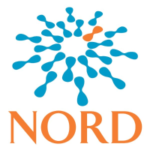 From the Editor…
From the Editor…
I have been working on a revision of the PRP Report in the Rare Disease Database hosted by the National Organization of Rare Disorders. The topic of “SIGNS & SYMPTOMS” presented a particularly challenging dilemma. I simply did not know the difference. I thought the terms were redundant. I was wrong
I found an article in Medical News Today that provided explained how SIGNS and SYMPTOMS are different.
As I share Judith’s article, an effort will be made to incorporate examples that PRP patients and caregivers will recognize.
In the context of pityriasis rubra pilaris, most PRP patients and caregivers would consider the terms “sign” and “symptom” to be redundant. We are wrong.
The red spot that appeared on my forehead in early August 2012 was a SIGN that could be recognized by me, my doctor and members of my family. Within two weeks the side of my face was red and Hector, my neighbor across the street, yelled out, “Hey Bill, what happened to your forehead?”
But no one – even Hector – knows if I have back pain or my feet hurt. These would be SYMPTOMS that only I can feel. They are subjective. The only way someone knows is if I tell them.
The observer defines whether it is a sign or symptom
Some say that it does not matter what the sign or symptom is, what matters is who observes it. For example, a rash could be a sign, symptom, or both.”
❏½ When I first noticed the rash while looking into the bathroom mirror, it was a sign
❏½ When my first dermatologist saw the rash for my first clinic visit, it was a symptom
A history of signs and symptoms
In 1808 the percussion technique was developed . That’s where the physician gently taps your chest wall and listens to the sound so that he can diagnose respiratory diseases. While still a useful technique, chest percussion has been replaced by even more accurate methods. Other advances included:
❏½ Using a stethoscope to listen to the sounds of the heart and lungs
❏½ Using the spirometer to measure the function of the lungs
❏½ Using the ophthalmoscope to examine the inside of the eye
Nordqvist concludes: “During the 20th century, hundreds of new devices and techniques were created to evaluate signs– most of them studied by doctors and healthcare professionals, not patients.
Medical symptoms
Nordqvist identifies three main types of symptoms:
❏½ Chronic symptoms – long lasting or recurrent symptoms. These are often seen in diabetes, asthma, and cancer.
❏½ Relapsing symptoms – symptoms which had occurred in the past, disappeared, and then come back. For instance in depression, multiple sclerosis, and also cancer.
❏½ Remitting symptoms – when symptoms improve and sometimes go away completely.
❏½ Constitutional symptoms – also known as general symptoms, these affect the entire body. They include fever, weight loss, fatigue or altered appetite.
❏½ Presenting symptom – also known as a chief or presenting complaint. Presenting symptoms refer to the initial symptom(s) that brought the patient to see the doctor.
❏½ Cardinal symptom – this is a term used by medical professionals referring to the symptom that ultimately leads to a diagnosis.
Medical signs
Nordqvist writes: “A medical sign is an objective feature indicating a medical fact or characteristic that is detected by a physician, nurse, or medical/laboratory device during the examination of a patient. Sometimes, a sign may not be noticed by the patient, or not seem relevant to them, but it is meaningful for the physician.’
Below are some examples of specific signs that may be recognized by the dermatologist.
❏½ Islands of sparing
❏½ Symmetry
❏½ The manner in which the inflammation progresses
PRP-savvy dermatologists will be asked by their patients to identify “specific signs” that help build a case for a diagnosis of pityriasis rubra pilaris.

Signs And Symptoms – What's the Difference?

